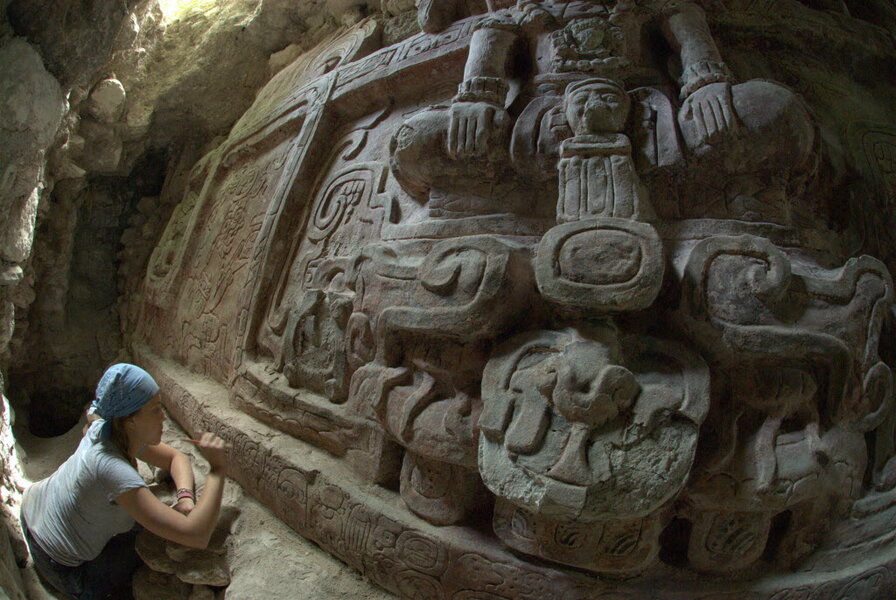Mayan frieze tells a tale of almost cosmic wars
Loading...
Archeologists have recovered a 26-foot long, and seven-foot tall frieze from a buried Mayan pyramid in Guatemala. The massive frieze, cast in stucco and painted red, depicts the crowning of a Mayan king, a find that offers a window into the epic battles between rival Mayan kingdoms and the dramas of changing fealties in the Americas more than a thousand years ago.
The frieze depicts a king of cosmic proportions seated atop the head of a mountain god. At the sides are crouching figures holding aloft offerings. The figures’ heads are wreathed in quetzal feathers, their bodies decorated in jade.
Archaeologist Francisco Estrada-Belli, head of the team that found the artwork, told USA Today that the find is telling both for the scene itself – which offers new evidence about how Mayans anointed their kings – and for the inscription at its bottom, one that tells a tale of swapped sides in a rivalry between two powerful Mayan kingdoms.
The frieze bears at its base an inscription of 30 glyphs that Harvard University expert Alex Tokovinine has translated as a note that the artwork was commissioned, a gift of the ruler of a nearby city-state, Ajwosaj ChanK'inich.
Ajwosaj ChanK'inich was part of the Snake Kingdom, centered in Mexico; its rival kingdom was centered at Tikal, in Guatemala. The city-state where the frieze was found, called Homul, had once belonged to Tikal’s kingdom – but its rulers switched sides somewhere amid the vast battles that pocked the lead-up to the ruin of the entire Mayan civilization, around 800 AD.
The commissioned frieze, then, is a tribute to Homul's defection and its pledging of loyalties to the Snake Kingdom.








